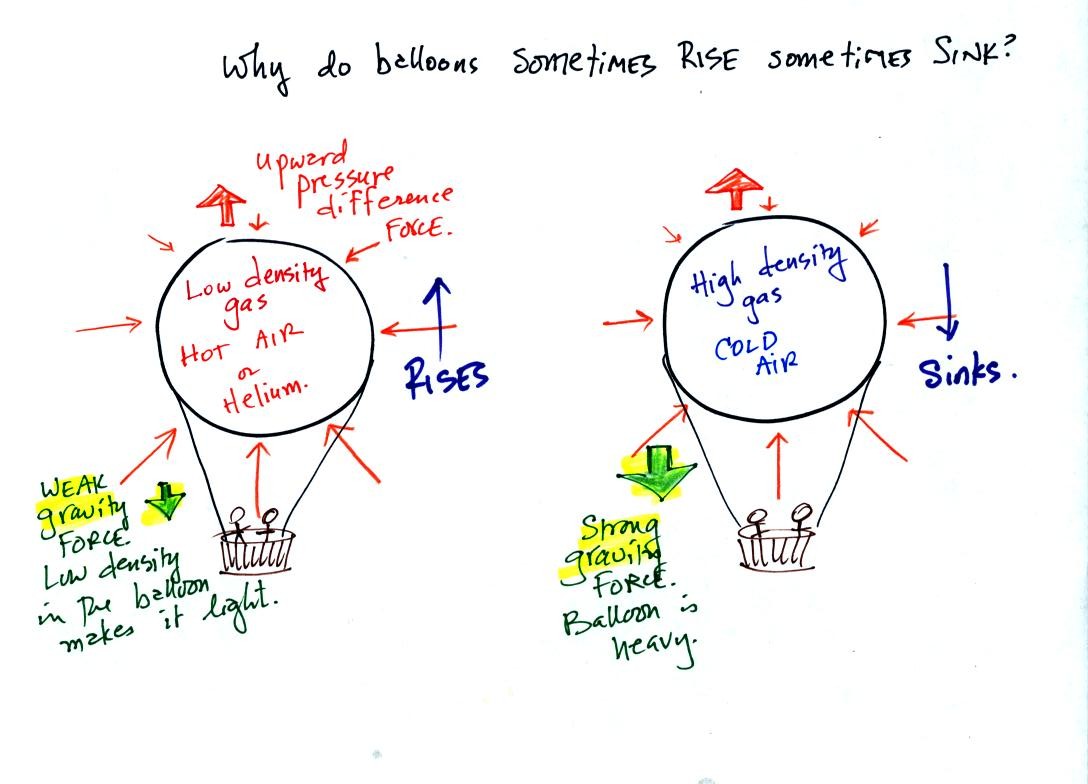Friday Jan. 26, 2007
The optional assignment is due at the beginning of class next Monday.
Some new reading was assigned.

Three layers of air in the atmosphere are shown above (each
layer
contains the same amount of air, 10% of the air in the
atmosphere). This picture reminds you that air pressure decreases with
increasing altitude.
The layer at the ground and at the bottom of the
atmosphere is "squished" by the weight of the air above.
Squeezing all of this air into a thin layer or small volume increases
the air's density. The highest air density is found at the bottom
of the atmosphere.
The next layer up is also squished but not as much as the bottom
layer. The density of the air in the second layer is lower than
in the bottom layer. The air in the 3rd layer has even lower
density. It is fairly easy to understand that air density
decreases with increasing altitude.
Finally if you look closely at the figure you can see that pressure decreases most rapidly
with increasing altitude in the dense air at the bottom of the
atmosphere.
Next we
looked at some of the historical events listed on pps 31 and 32 in the
photocopied class notes. Note that the barometer was invented in
the mid-1600s. We watched a short video recalling Auguste
Piccard's first flight into the stratosphere by balloon (May 27, 1931).

We'll look at a couple more video segments next week.
The upward
pressure force that kept water in the inverted glass in the class
demonstration is also what causes balloons to rise.

The thin orange arrows surrounding each balloon show the
pressure of the
surrounding air pushing against all sides of the baloons.
Pressure decreases with increasing altitude, so the arrows at the top
of the balloon pushing downward are weaker than the upward pointing
arrows at the bottom of the balloon. This results in an upward
pointing pressure difference force, the fat orange arrow at the top of
each balloon. Note that the upward force is the same on both
balloons. The strength of this force is determined by the air
surrounding the balloons. We assume that the same air is
surrounding each balloon.
Both balloons are pulled downward by gravity. This is the weight
of the balloon. The balloon at left is filled with low density
gas (hot air or something like helium). The downward gravity
force is weaker than the upward pressure difference force. This
balloon would rise.
The balloon at right weighs more because it is filled with high density
gas (cold air). Gravity is stronger than the upward pressure
difference force and this balloon sinks.
By changing the density of the air in the balloons we change the weight
of the balloon. This determines whether the balloon will rise or
sink.


